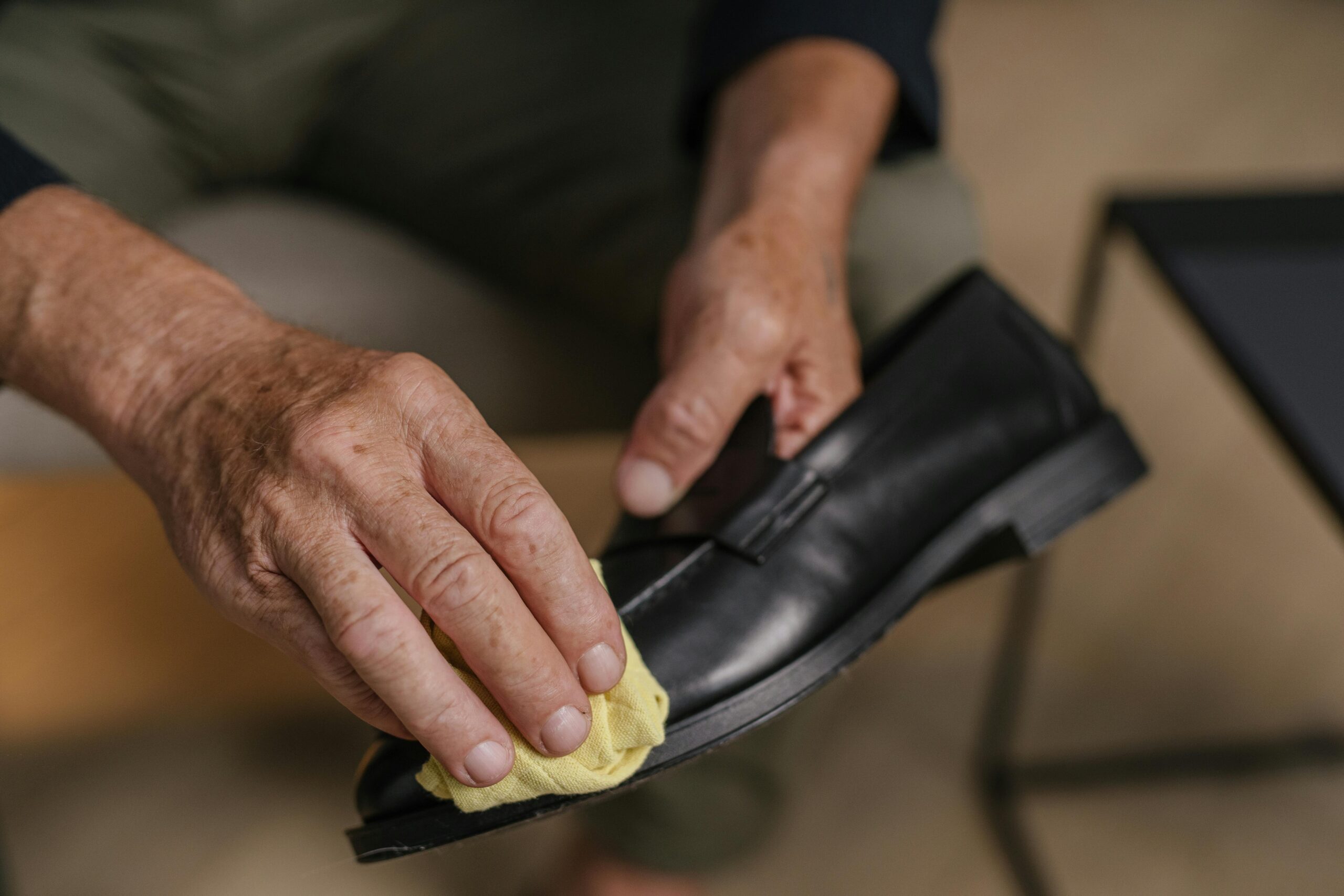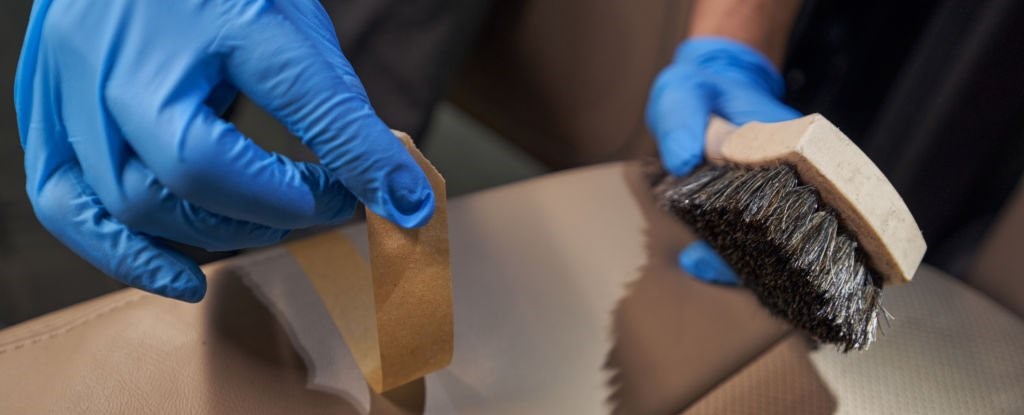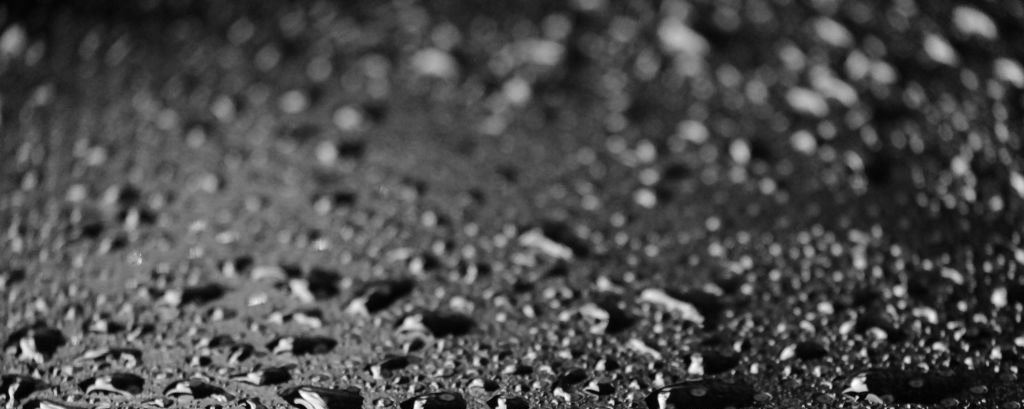
Blog
How to take care of leather?

Leather, as a natural and durable material, is widely used in various industries such as fashion, furniture, and automotive due to its beauty and high quality. However, to maintain these qualities and extend the lifespan of leather, proper care and maintenance are essential. This guide provides scientific and professional tips and methods for caring for leather, enabling users to make the most of their leather products and enjoy their beauty and functionality.
1. Regular Cleaning :
Regular cleaning of leather is one of the most important steps in caring for it, helping to maintain its beauty and quality. Here are more details about this step:
A. Use a Soft Cloth :
– Type of Cloth: Use soft, lint-free cloths for cleaning leather. Microfiber cloths are excellent options as they effectively absorb dust without damaging the leather surface.
– Method of Use: Gently wipe the leather surface with the cloth to collect dust and dirt. Perform this in a circular motion to avoid creating scratches on the leather.
B. Mild Cleaning Solutions :
– Solution Mix: To prepare a cleaning solution, mix one part mild soap (such as baby liquid soap) with four parts water. This mixture effectively removes dirt without harming the leather.
– Using a Sponge or Cloth: With a soft sponge or clean cloth, apply some of the solution gently to the leather surface. Do this with soft, circular motions.
C. Stain Removal :
– How to Handle Stains: If there is a stain on the leather, you should act quickly. Use a soft, damp cloth to gently wipe the stain, avoiding vigorous rubbing to prevent damage to the leather surface.
– Using Specific Materials: For specific stains like grease or oil, you can use cornstarch or talcum powder. These materials help absorb the stain. Simply sprinkle the powder on the stain and after a few hours, wipe it off with a soft cloth.
D. Proper Drying :
– Avoid Direct Heat: After cleaning, allow the leather to air dry at room temperature. Avoid using hairdryers, radiators, or other heat sources, as heat can damage the leather and dry it out.
– Ventilation: If the leather gets wet, place it in a well-ventilated area to dry slowly. This helps prevent unpleasant odors and mold growth.
E. Cleaning Schedule :
– Regular Planning: To maintain the quality of the leather, it’s best to establish a regular cleaning schedule. For example, you can remove dust weekly and perform a deeper clean monthly.
– Using a Calendar: You can use a calendar or digital reminders to ensure you don’t forget the appropriate times for cleaning your leather.

2. Conditioning :
Conditioning leather is a crucial step in its care, helping to maintain softness, flexibility, and prevent cracking. Here are more details about this step:
A. Choosing the Right Products:
– Types of Conditioners: Use specialized leather creams and oils that typically contain natural ingredients like waxes, plant oils, and natural extracts. These products help retain moisture and keep the leather soft.
– Avoid Harsh Chemicals: Refrain from using products that contain alcohol or strong chemicals, as these can damage the leather.
B. Timing for Conditioning:
– Frequency of Conditioning: Generally, condition leather every three to six months. In dry and cold conditions, you may need to condition it more frequently.
– Seasonal Note: During dry seasons, such as winter, conditioning becomes more critical. For natural leather, doing this in humid seasons is also important to prevent cracking.
C. How to Apply Conditioner:
– Preparing the Leather: Ensure the leather is clean before applying the conditioner. If the leather is dirty, particles can penetrate the leather while conditioning, causing damage.
– Application Method: Apply a small amount of conditioner to a soft cloth or sponge and gently rub it onto the leather surface. Use circular and gentle motions to ensure even absorption.
D. Testing Before Use:
– Spot Test: Before using any new product, test it on a small, inconspicuous area of the leather. This helps ensure that it won’t cause discoloration or damage.
E. Storing Conditioner:
– Storage Conditions: Keep conditioning products in a cool, dry place, away from direct sunlight. This helps preserve the quality and shelf life of the products.
– Expiration Dates: Pay attention to the expiration dates of the products and avoid using expired items.
F. Consider the Type of Leather:
– Different Types of Leather: Various types of leather (such as natural leather, lamb leather, cow leather, and synthetic leather) may require different conditioners. Use products suitable for your specific type of leather.
3.Protection Against Water and Moisture :
Protecting leather from water and moisture is a crucial step in its care. Moisture can cause damage, create stains, and even promote mold growth. Here are more details about this step:
A. Use Water-Repellent Sprays :
– Choosing the Right Spray: Use water-repellent sprays specifically designed for leather. These sprays typically contain natural, leather-safe ingredients.
– Application Method: Spray evenly over the leather surface and allow it to dry. Perform this in an open area away from direct sunlight to prevent moisture absorption.
– Reapplication: Repeat this process every few weeks or before using leather items in humid conditions to maintain their water-resistant properties.
B. Avoid Contact with Water :
– Caution in Wet Conditions: Try to avoid using leather products during rain or snow, or use protective covers if necessary. If you must use leather in these conditions, opt for water-resistant boots and bags.
– Responding to Wetness: If leather accidentally gets wet, immediately dry it with a soft, dry cloth. Avoid direct heat sources for drying, as this can damage the leather.
C. Stain Treatment :
– Stain Removal Methods: If a stain occurs on the leather, clean it promptly. Use a soft, damp cloth to wipe the stain, and if necessary, use a mild soap and water solution.
– Using Natural Materials: For specific stains like grease or oil, you can use cornstarch or talcum powder. These materials help absorb the stain and prevent it from penetrating the leather.
D. Preventing Moisture :
– Storage Location: Store leather in cool, dry places. Avoid keeping it in humid or warm areas, as these conditions can harm the leather.
– Using Moisture Absorbers: You can use silica gel or other moisture absorbers in the storage area to prevent moisture buildup and mold growth.

4.Proper Storage Conditions :
Storing leather in appropriate conditions is essential for maintaining its quality and beauty. Here are more details about this step:
A. Storage Environment :
– Cool and Dry Location: Leather should be stored in cool, dry, and dark places. Excess heat or humidity can damage the leather, leading to cracking or fading.
– Avoid Direct Sunlight: Keeping leather exposed to direct sunlight can change its color and dry it out. Therefore, it’s best to store leather in areas with indirect light.
B. Use of Boxes or Bags :
– Protection from Physical Damage: For leather bags and shoes, use special boxes or fabric bags. This helps prevent dust accumulation and protects against physical damage.
– Avoid Heavy Weight: Do not place heavy objects on leather items. Excess pressure can distort the shape and structure of the leather.
C. Use of Shapers :
– Maintaining Shape and Structure: For bags and shoes, use appropriate shapers. These tools help maintain the natural shape of the leather and prevent creasing.
– Choosing the Right Shaper: Ensure that the shapers are made from soft, leather-friendly materials to avoid damaging the surface.
D. Regular Inspections :
– Periodic Checks: Regularly inspect the leather for any signs of damage, stains, or discoloration. This helps you take timely action if repairs are needed.
– Monitor for Unpleasant Odors: If you notice any unpleasant odors, it may indicate moisture or mold. In this case, place the leather in a well-ventilated area to dry.
E. Avoid Sudden Temperature Changes :
– Gradual Temperature Changes: Sudden temperature changes can harm leather. For example, avoid moving leather from very warm environments to cold ones abruptly.
– Temperature Control: During extremely cold or hot days, try to gradually adjust the room temperature to prevent damage to the leather.
5. Proper Usage :
Using leather products correctly not only helps maintain their quality and beauty but also extends their lifespan. Here are more details about this step:
A. Proper Loading :
– Avoid Overloading: Refrain from placing heavy or sharp objects inside leather bags and shoes. Overloading can damage the shape and structure of the leather, causing creasing.
– Use Appropriate Space: Utilize different compartments for storage. For example, use pockets or separate sections for smaller items to prevent pressure on the leather.
B. Attention to Usage Conditions :
– Weather Conditions: Avoid using leather in unsuitable weather conditions, such as rain or snow, or use protective covers. This helps prevent water and moisture from penetrating the leather.
– Protection from Contaminants: Keep leather away from dirt, mud, or other chemicals. If leather gets contaminated, clean it immediately to prevent damage.
C. Care During Use :
– Use Protective Covers: If possible, use protective covers for leather bags and shoes in adverse conditions. These covers can help prevent water and dirt penetration.
– Temperature Awareness: Avoid placing leather in extremely hot or cold environments. Extreme temperatures can damage the leather and dry it out.
D. Cleaning After Use :
– Quick Cleaning: After using leather products, promptly clean them. Wipe off surface dust and dirt with a soft cloth to prevent stains.
– Conditioning After Frequent Use: If used frequently, remember to condition the leather after several uses to maintain its softness and quality.
E. Attention to Signs of Damage :
– Identify Damages: Periodically inspect your leather for scratches, cracks, or discoloration. If you notice any damage, take action quickly to prevent it from worsening.
– Use Repair Products: For minor scratches, consider using leather repair products. These can help restore the color and quality of the leather.
6. Repair and Maintenance :
Regular repair and maintenance of leather help preserve its quality and beauty. Here are more details about this step:
A. Timely Repairs :
– Identify Damage: Regularly inspect your leather for any scratches, cracks, or other damage. Early identification allows you to take action before the damage worsens.
– Prompt Action: If you notice any damage, address it immediately. This may involve cleaning, conditioning, or using repair products.
B. Use of Leather Repair Kits :
– Available Kits: Leather repair kits typically include repair materials, colorants, and necessary tools for fixing scratches and surface damage. These kits can help you address minor damages on your own.
– Follow Instructions: Always carefully follow the instructions provided in the kit to achieve the best results.
C. Professional Help :
– Specialized Services: For major repairs or serious damage, it’s best to consult a professional leather repair service. These individuals have the experience and skills needed to restore leather effectively.
– Specialized Repairs: Some damages, such as deep cracks or tears, require specialized repairs that should be performed by professionals.
D. Post-Repair Care :
– Regular Conditioning: After any type of repair, remember to condition the leather. This helps maintain its softness and quality while preventing future damage.
– Proper Storage Conditions: Store the leather in appropriate conditions after repair. Keep it away from excessive heat and moisture, placing it in a cool, dry location.
E. Preventing Future Damage :
– Proper Usage: By adhering to proper usage and maintenance guidelines, you can prevent new damage from occurring.
– Educate Yourself: Learn more about how to care for and repair leather. The more knowledge you have, the better you can care for your leather items.
7. Preventing Unpleasant Odors :
Preventing unpleasant odors in leather is an important aspect of its care. Unpleasant smells can arise from moisture, dirt, or inadequate ventilation. Here are more details about this topic:
A. Proper Ventilation :
– Avoid Closed Spaces: Do not store leather in closed, unventilated areas. Leather needs to breathe, and lack of ventilation can lead to moisture buildup and unpleasant odors.
– Use Open Spaces: If possible, store leather in open areas with good airflow. This helps prevent unpleasant smells.
B. Use of Natural Deodorizers :
– Homemade Deodorizers: You can use natural deodorizers like baking soda or talcum powder. These materials help absorb moisture and unpleasant odors.
– Using Silica Gel: Placing silica gel packets alongside leather items can help absorb moisture and prevent unpleasant smells.
C. Regular Cleaning :
– Periodic Cleaning: Regularly clean leather to prevent dust and dirt accumulation. This helps maintain a fresh and clean smell.
– Using Suitable Solutions: When cleaning, use mild solutions specifically designed for leather to avoid damaging it.
D. Care in Specific Conditions :
– Avoiding Moisture: Refrain from using leather in humid conditions or use protective covers. Moisture can lead to unpleasant odors and mold growth.
– Immediate Drying: If leather gets wet, immediately wipe it with a soft, dry cloth and allow it to air dry. Avoid direct heat.
E. Regular Inspections :
– Routine Checks: Periodically inspect leather for any unpleasant odors or signs of moisture. This allows you to take timely action if needed.
– Using Leather Fresheners: Consider using leather-specific fresheners to neutralize odors and impart a pleasant scent to the leather.
Conclusion
To maintain the quality and beauty of leather, clean and condition it regularly, avoid contact with moisture, and store it in suitable conditions. Additionally, promptly repair any damage and choose high-quality products from reputable brands. By following these practices, you can extend the lifespan of your leather and enjoy its beauty for years to come.

